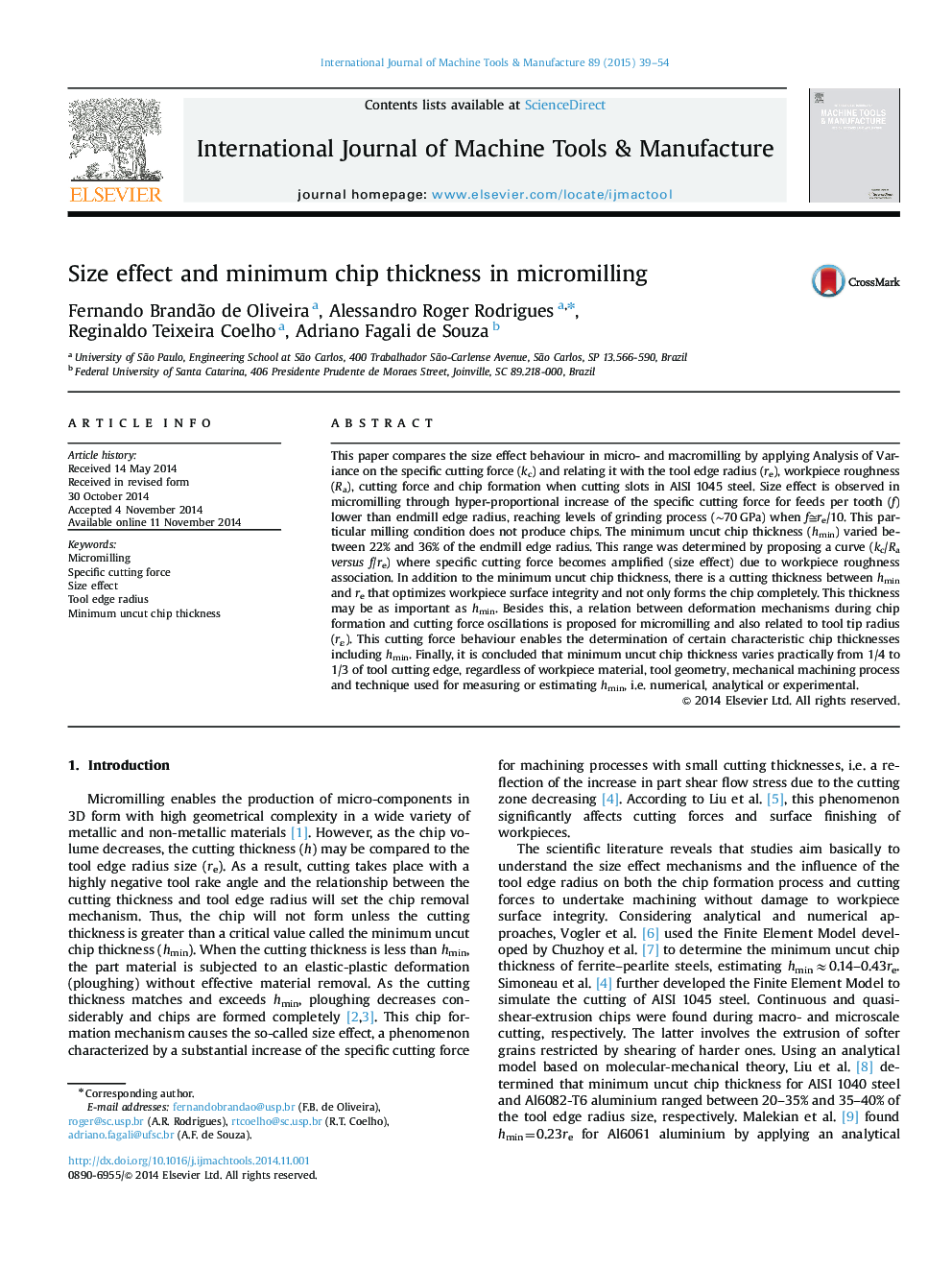| Article ID | Journal | Published Year | Pages | File Type |
|---|---|---|---|---|
| 778808 | International Journal of Machine Tools and Manufacture | 2015 | 16 Pages |
•Determination of the minimum chip thickness is simple and sensitive.•Results were validated by other methods from literature scientific.•Proposal may be used for any part material and machining processes by cutting.•Part roughness is not always optimized when minimum chip thickness is reached.•Minimum chip thickness always lies between 1/4 and 1/3 of the tool edge radius.
This paper compares the size effect behaviour in micro- and macromilling by applying Analysis of Variance on the specific cutting force (kc) and relating it with the tool edge radius (re), workpiece roughness (Ra), cutting force and chip formation when cutting slots in AISI 1045 steel. Size effect is observed in micromilling through hyper-proportional increase of the specific cutting force for feeds per tooth (f) lower than endmill edge radius, reaching levels of grinding process (∼70 GPa) when f≅re/10. This particular milling condition does not produce chips. The minimum uncut chip thickness (hmin) varied between 22% and 36% of the endmill edge radius. This range was determined by proposing a curve (kc/Raversus f/re) where specific cutting force becomes amplified (size effect) due to workpiece roughness association. In addition to the minimum uncut chip thickness, there is a cutting thickness between hmin and re that optimizes workpiece surface integrity and not only forms the chip completely. This thickness may be as important as hmin. Besides this, a relation between deformation mechanisms during chip formation and cutting force oscillations is proposed for micromilling and also related to tool tip radius (rε). This cutting force behaviour enables the determination of certain characteristic chip thicknesses including hmin. Finally, it is concluded that minimum uncut chip thickness varies practically from 1/4 to 1/3 of tool cutting edge, regardless of workpiece material, tool geometry, mechanical machining process and technique used for measuring or estimating hmin, i.e. numerical, analytical or experimental.
Graphical abstractFigure optionsDownload full-size imageDownload as PowerPoint slide
